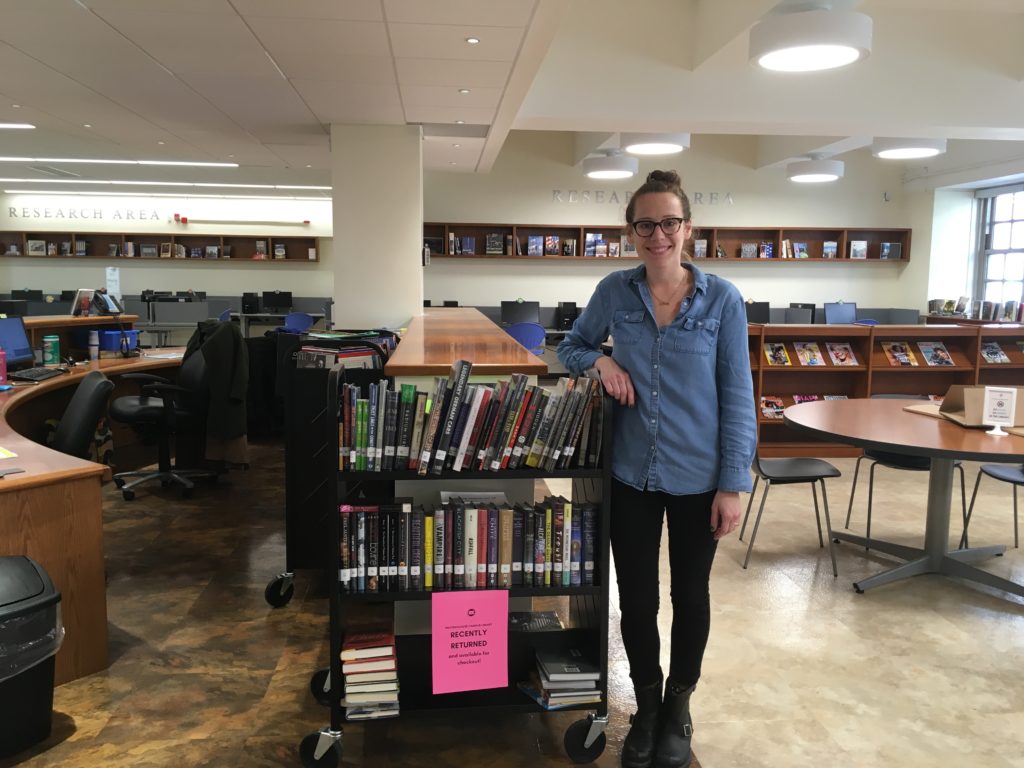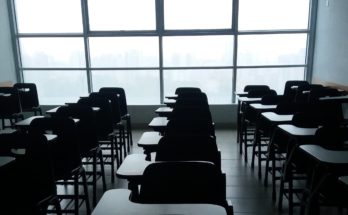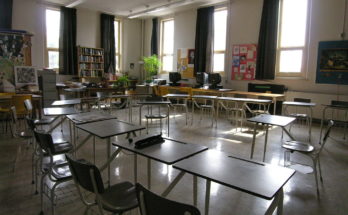
The Bronx’s Herbert H. Lehman Campus is a sprawling complex that straddles the Hutchinson River Parkway and houses seven schools, more than 3,000 students, more than 300 staff members, and a single librarian*: Christina Gavin.
On a normal school day, Gavin would routinely check seven mailboxes, order books from seven budgets and hold open library sessions for up to 80 students at a time from a varied combination of schools. After school hours, she ran anime and crafts clubs and selected stacks of books to tie with bows for the night school students who arrived after she went home.
Before, her work was seen as extra and enriching. After Covid-19, Gavin and her fellow librarians have seamlessly stepped into central roles, wading through the deluge of new online resources on behalf of students and teachers. “This is our time to shine,” said Gavin, about the current vibe among her fellow librarians.
Librarians represent a sliver of the city’s 75,000 teachers, with the most generous estimates placing the number of acting librarians in the range of 350. Librarians serving multiple schools within one building make up an even smaller sect, yet, they have an outsized reach; the city has less than 100 campus librarians, but they serve approximately 270 secondary schools and nearly 150,000 students.
In the 1990’s, the city began carving up its large, comprehensive high schools, which enrolled–and, the argument goes, often failed–thousands of students each, into smaller schools. The result is buildings or “campuses” that are a hodgepodge of small schools, including elementary and secondary, traditional and charter. Firm boundaries and schedules often keep the co-located schools’ staff, students, and spaces separated.
The exception: the librarian and their library.
“I am the only shared academic resource,” Rachel Green, the librarian of three secondary schools on the George Westinghouse Campus in Brooklyn, said.
When co-located schools chip in to share a librarian, it can be a win/win: students reap the full benefits of having library access and schools have a cost-effective way of complying with New York State law, which requires secondary schools to have a staffed library. Available data suggests that less than half of secondary schools actually do.
See where campuses librarians are with the Campus Librarian Network’s interactive map.
As a shared resource, campus librarians have seen remote learning bring a unique set of opportunities, like showcasing their curation skills and virtually participating in more of their schools’ staff meetings than they ever could have before. It has also brought a unique set of challenges, like managing classrooms in several online learning platforms and calibrating expectations with several principles.
“Because our campus librarians work with multiple schools, they’re experiencing this in a way that is different from a classroom teacher who is working within the context of their specific school,” Russell West, New Visions for Publics Schools’ Deputy Director of Instruction and the program officer for the Campus Librarian Network, said.
The Campus Librarian Network was founded in 1997 by New Visions, a nonprofit and school operator that was a key player in the small schools movement, with support from the Astor Fund for Public School Libraries. The network offers targeted professional development for this niche group, typically providing monthly learning opportunities at destinations like Harlem’s Schomburg Library and the Brooklyn Collection.
These outings ceased with the quarantine. In their stead, the network established weekly online meetings for members to share their adaptations to the new normal. A central concern of late has been ensuring students have access to books–both electronic and physical–while at home.
During a recent meeting, Green, the librarian for the Westinghouse Campus, shared that she began producing a weekly web series– “What to Read This Weekend” –with Marie Southwell, the librarian of four schools on the Graphic Arts Campus in Manhattan.
In the debut episode, Green explains, “We found that our students weren’t reading because they didn’t know how to get access to these books.” In each episode, the pair recommends four readily accessible, thematic texts.
As of the day schools closed, Gavin’s library had circulated 6,599 books this school year with some 1,000 books still checked out. There is a strict no-electronics policy on the Lehman Campus so Gavin has only ever allocated her book budget towards hard copies of books. Now, she is pushing free electronic resources to the 1,800 students who signed up for one of her seven Google Classrooms (in seven separate Google Suites).
Gavin, upon sensing schools might close, scrambled to grab a couple dozen physical copies of books provided through Lambda Literary’s LGBTQ+ Writers in Schools program along with postage and envelopes. Gavin then reached out to students and staff who had previously shown interest in LGBTQ+ issues and mailed books to their homes ahead of a virtual author talk with Julian Winters.
One adjustment for campus librarians during remote learning has been the shift from primarily helping students access resources to increasingly helping teachers access resources. West, who facilitates the Campus Librarian Network, has been particularly impressed with the fervor of campus librarians’ desire to help the (many) teachers at their (many) schools.
“They’re just really driven to be a resource for their colleagues,” West said. To describe librarians’ raison d’etre, West compared them–in the most admirable of ways–to magpies. “They’re like the little birds that collect shiny things. They’re interested in what you’re interested in.”
Case in point: When one teacher asked Green if it would be too much for her to make a video tutorial on creating an annotated bibliography by the next Monday, Green’s response was, “This is the highlight of my week.”
Staggered virtual scheduling has allowed Green to attend staff meetings for all three of her schools, something that had been impossible before. This has given her a stronger sense of each school’s needs and given the schools a direct pipeline to their librarian.
As a result, Green is seeing new teachers solicit her help, even when they are not sure what is fair game to request: “They take a chance because…helloooo this is a pandemic.”
*In a case of bad timing, a second librarian had been brought on whose start date was the first day of remote learning.



